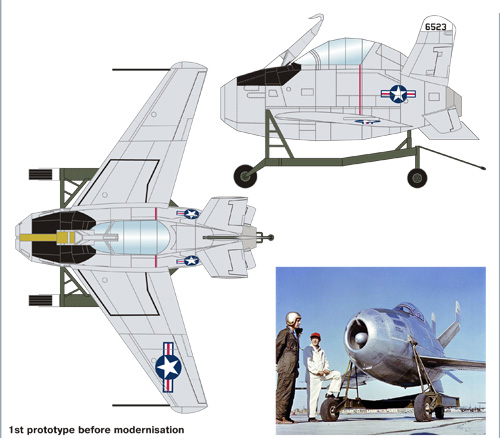
While being positioned in the tunnel, the aircraft fell 12.2 m, was badly damaged, and had to be returned to St Louis, being replaced at Moffett by the second machine. On 9 November 1947 the first of two XF-85s was disassembled at the manufacturer's St Louis plant and flown aboard a C-97 transport to Moffett Field, California, for wind-tunnel tests. In 1947, indoor tests were begun to evaluate the mating arrangement between the Goblin and a mock-up of a B-36 fuselage. Equipped with a probe or 'skyhook' designed to engage a trapeze lowered by the bomber (a process much like threading a needle) the XF-85 was powered by a 1360kg thrust Westinghouse J34-WE-12 turbojet engine. It had an odd-looking, X-shaped tail, although flight controls were conventional. It had 36-degree swept wings which folded upward from the root for storage inside its mother ship. Over target, it would be dropped free to protect the B-36 from enemy interceptors.īecause of its unusual task, the XF-85 Goblin was a unique design.



Barkey, the XF-85 was to be stowed in the number one or four bomb bay of the B-36 intercontinental bomber. The McDonnell XF-85 Goblin was the only USAF aircraft ever conceived from the outset as a 'parasite' fighter to be carried aboard bombers, in the same manner by which the converted Republic RF-84K Thunderflash was employed operationally for a time. Virtual Aircraft Museum / USA / McDonnell Douglas


 0 kommentar(er)
0 kommentar(er)
